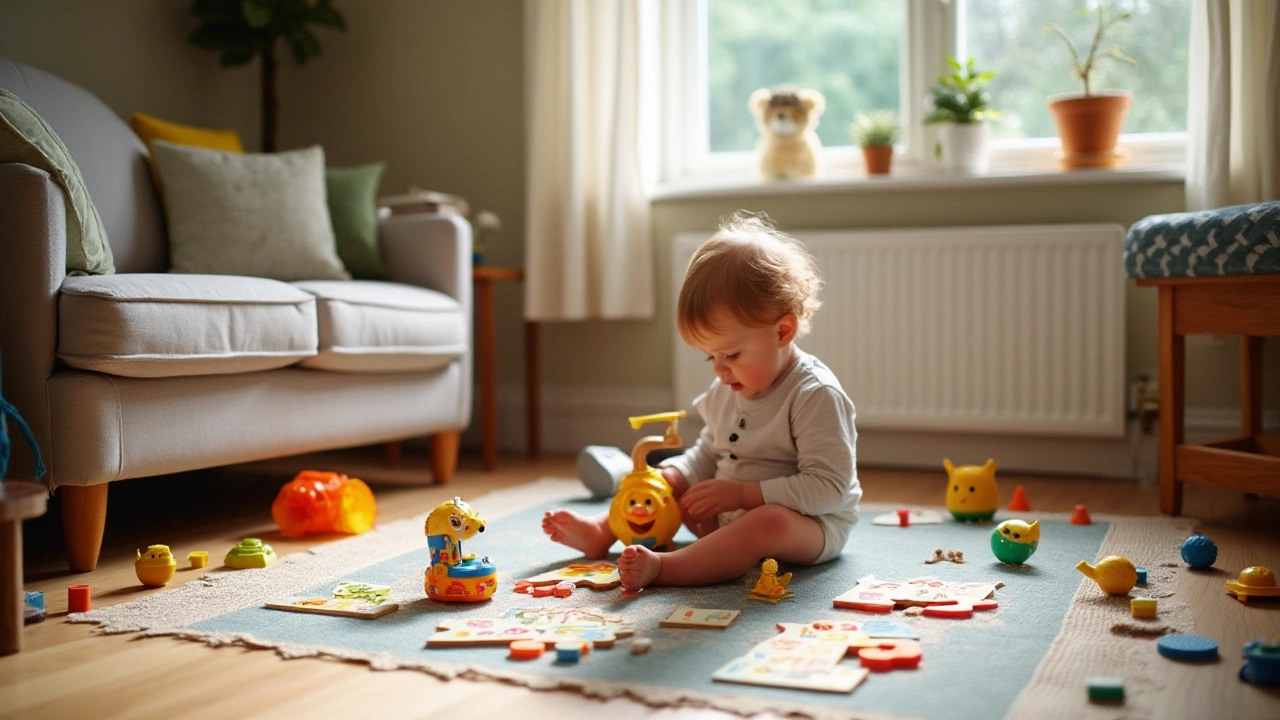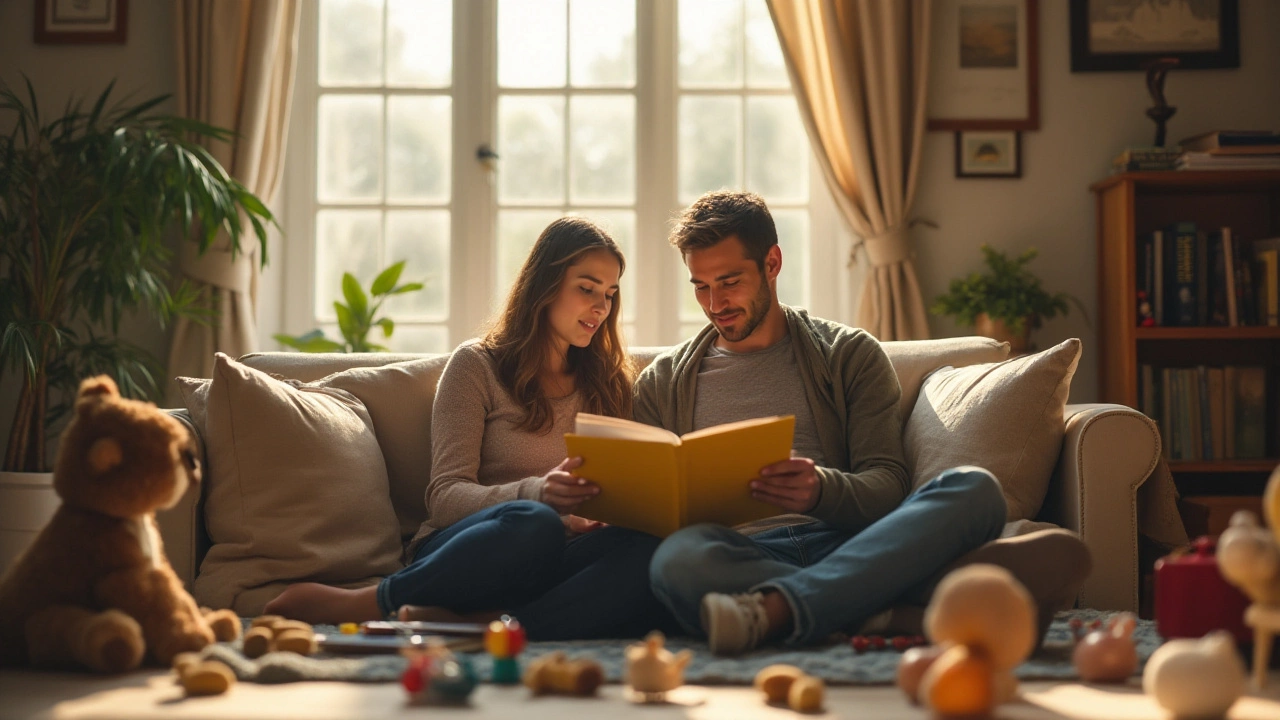Understanding and Applying the 3-3-3 Anxiety Technique with Educational Toys
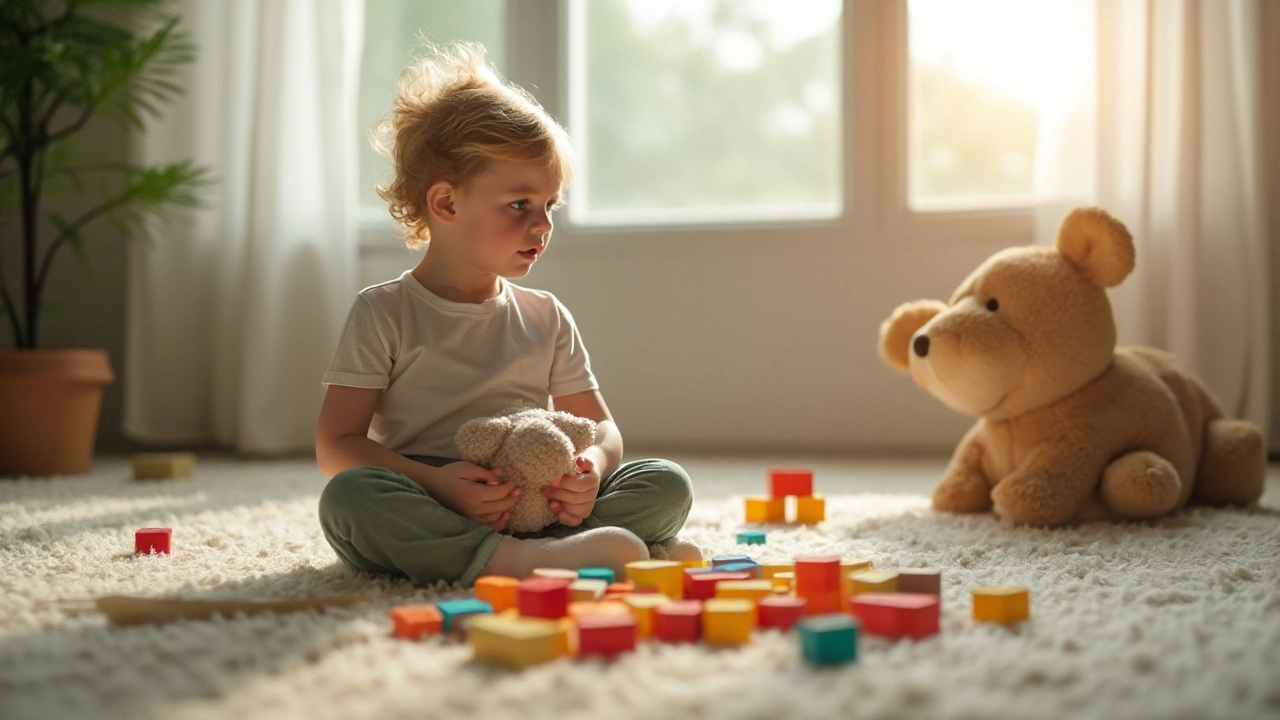
Anxiety can often feel like an overpowering storm, but with the right techniques, it becomes much more manageable. One such simple yet effective method is the 3-3-3 trick, known for its grounding properties that help dissipate anxious thoughts.
This technique can be especially beneficial when integrated with educational toys, transforming a calming exercise into an interactive play session. In this article, we'll dive into the world of anxiety relief through play, offering practical tips and insights that bring peace and focus into daily routines.
Discover how mindfulness, paired with the right tools, can provide a soothing escape for both children and adults, making the 3-3-3 trick a family-friendly method to ease tension and enhance cognitive skills.
- Understanding Anxiety
- What is the 3-3-3 Trick?
- Mindfulness and Play
- Educational Toys for Anxiety
- Practical Tips at Home
- Success Stories and Benefits
Understanding Anxiety
Anxiety is a common emotional response, characterized by feelings of tension, worried thoughts, and physical changes like increased blood pressure. It goes beyond regular stress and can significantly impact daily life. According to the Anxiety and Depression Association of America, anxiety disorders are the most common mental illness in the U.S., affecting over 40 million adults aged 18 and older. These statistics underline the importance of effective management tools, such as the 3-3-3 trick, which can serve as practical self-help measures.
Recognizing the signs of anxiety early can aid in managing its effects more effectively. Symptoms might include persistent nervousness, an increased heart rate, rapid breathing, or gastrointestinal problems. While the perception might vary from person to person, these sensations share the common thread of creating mental chaos. Children, in particular, may express anxiety through irritability, changes in eating habits, or difficulty concentrating, which can often influence their learning processes.
The concept of using educational toys to combat anxiety is gaining traction. These toys are not just for learning purposes; they can be powerful tools to create a sensory experience that assists in calming anxious minds. As the Journal of Play Therapy notes, skills such as focusing and mindfulness are developed through play, essential for reducing anxiety symptoms. Through tactile engagement and interactive learning, toys encourage children to live in the moment, redirecting their focus away from anxious thoughts.
"Even in the darkest of moments, play can allow an escape, offering light and hope," asserts noted psychologist Dr. Jane Smith, encapsulating the role of play as not only educational but also therapeutic.
It's crucial to approach anxiety with a multifaceted strategy, and educational toys provide a unique avenue to explore this. They offer an intersection between learning and tranquility, assisting both children and adults to develop coping mechanisms. Using educational toys can be a shared experience, inviting family members to bond and collectively diffuse tension. This interconnectedness paves the way for a more harmonious household dynamic, ultimately contributing to a more balanced mental state for everyone involved.
The 3-3-3 trick for anxiety relief complements these tools by providing a structured method to combat immediate stressors. This technique, which involves naming three things you see, three things you hear, and moving three parts of your body, integrates seamlessly with the engaging nature of toys. This synergy showcases the innovative ways in which simple strategies can be employed to navigate the complexities of anxiety.
What is the 3-3-3 Trick?
Amidst the hustle of our daily lives, anxiety can strike unexpectedly, leaving us feeling overwhelmed and disoriented. The 3-3-3 trick is a mental grounding exercise that aims to bring us back to the present moment, utilizing our senses to distract and recalibrate our racing minds. This technique is structured to be simple enough for anyone to utilize effectively, whether in the throes of anxious thoughts or simply as a daily mindfulness practice to maintain mental health balance. It starts with identifying three things you can see around you, then three things you can hear, and finally, moving three parts of your body. This systematic approach distracts the mind, forcing it to focus on immediate sensory experiences rather than the abstract fears conjured by anxiety.
The beauty of the 3-3-3 trick is in its versatility and accessibility, making it suitable for use in diverse settings, from a busy office to a quiet home. Engaging different senses also helps interrupt mental loops by anchoring thoughts in the tangible world. The simplicity of this technique is what makes it so effective, as it can be spontaneously employed in any situation without the need for special tools or preparation. By practicing this exercise regularly, individuals often find themselves better able to manage stress in a variety of environments, turning potential anxiety into a moment of mindful reflection and focus.
"Grounding exercises like the 3-3-3 trick can be a powerful tool in managing anxiety," says Dr. Sarah Hughes, a renowned psychologist specializing in mindfulness-based therapies. "By consciously directing our attention, we can interrupt the spiral of anxious thoughts and restore a sense of calm and control."
Adding elements like educational toys into this practice can further enhance its effects, especially in children, by merging the trick with playful learning. Toys that engage multiple senses, such as textured blocks or musical instruments, can serve as a focal point for the technique, turning stress-relief into an engaging activity. By combining the traditional steps of the 3-3-3 trick with play, both adults and children can build resilience against stress while having fun. This method also helps in improving cognitive skills as it exercises the mind's ability to focus, observe, and react in the moment.
In application, this technique empowers individuals to take an active role in their mental well-being by transforming a reactive situation into a proactive practice. As anxiety remains a common challenge in today's fast-paced world, integrating simple yet effective methods like the 3-3-3 into our daily routines offers a pathway to healthier living. With repeated use, the 3-3-3 trick becomes second nature, a reliable anchor in any storm of stress or worry, thus opening the door to greater peace and mindfulness in every aspect of life.
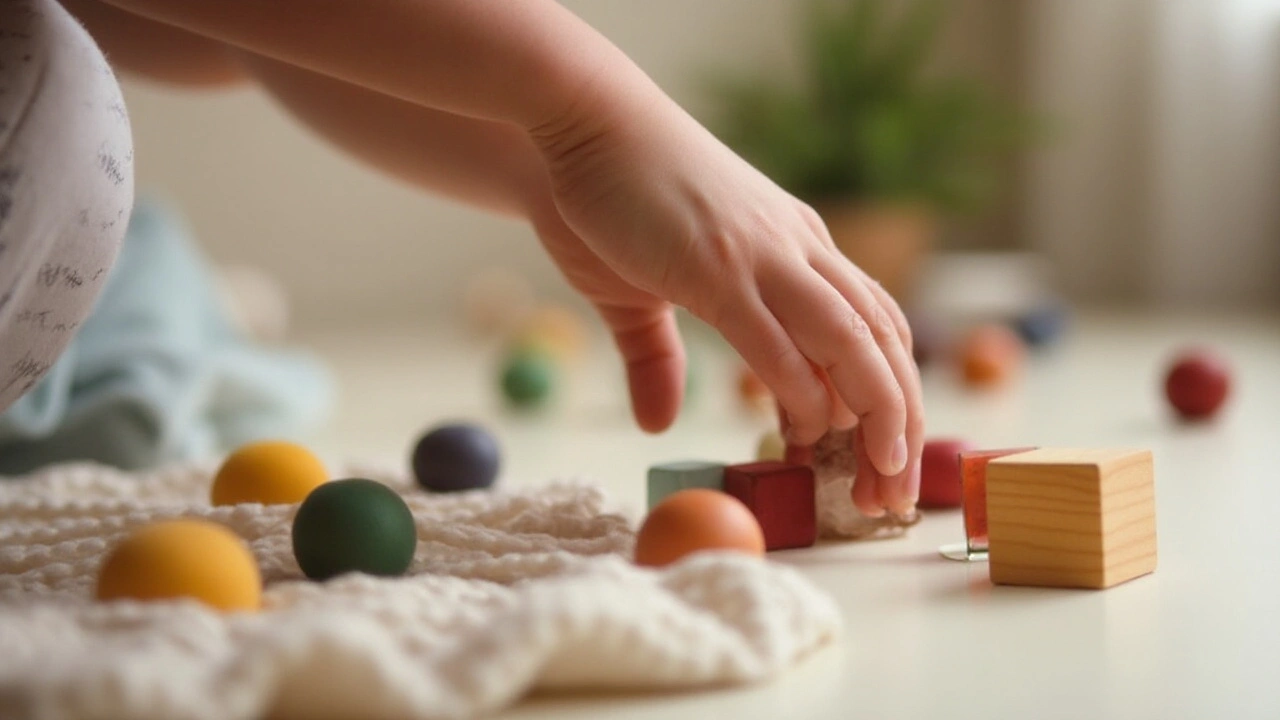
Mindfulness and Play
Bringing mindfulness into playtime can be a transformative experience, especially when anxiety is part of the daily landscape. This approach takes the abstract idea of mindfulness and makes it tangible through educational toys, turning what is often seen as traditional play into something that is both purposeful and healing. Imagine a world where toys do not just educate but also soothe, where each piece serves as a conduit for calm and focus. Children, and even adults, often benefit from grounding practices when the whirlwind of anxiety looms, and integrating this into play can be a gentle introduction for beginners.
The fundamental principle of mindfulness is to maintain a conscious awareness of the present moment, without judgment. This can be difficult for kids, but when you connect mindfulness with play, the task becomes enjoyable. For instance, using sensory toys like kinetic sand or textured blocks not only enhances tactile learning but also draws attention away from distressing thoughts. As the hands mold and press the sand, or stack and sort vibrant blocks, they do more than just engage creatively—they anchor the mind. The marriage between mindfulness and educational tools thus becomes seamless, leading participants into a space of imagination where anxiety has no currency. Indeed, as Thich Nhat Hanh noted, "When you are truly there, mind and body together, you can touch the flower deeply, and the beauty and fragrance of the flower becomes a reality."
Structured play settings using anxiety relief techniques like concentrating on breath with each toy movement also enhance this process. Start by having the child take deep, slow breaths each time they stack a block or swirl their hand through water beads. The repetitive nature of these actions paired with rhythmic breathing instills a calming pattern that is hard for anxiety to penetrate. This technique is beneficial in developing concentration and emotional regulation. Additionally, creating stories around the toys can further tether their attention. When you build a narrative, say about each toy block being part of a grand castle, focus diverts from the internal to the visionary external. The act of storytelling brings language arts into the play and enriches language learning.
Incorporating play into mindful practices is not confined to young children. Teenagers or adults when feeling stressed can adapt this approach with puzzles or model kits. The commitment and focus required to fit pieces meticulously offer a mental diversion akin to meditation. Beyer and Malarkey, in their study published in 2020, found that adults engaging with complex puzzle-solving reported significant reductions in stress levels. This transformative power of play when intertwined with mindfulness can make a meaningful difference across age groups.
Using mindfulness with toys could also include combining tactile experiences with auditory stimuli. Playing soft music or nature sounds as a backdrop when engaging with toys can add another layer of sensory input. This method was noted for its effectiveness in many child development contexts, often helping regulate both mood and energy levels. Whether you're swirling a pastel ribbon in the air while listening to a gentle stream or striking a chime followed by peace-filled silence, these experiences highlight the tranquil potential of mindful play. Such activities replicate strategies used in numerous therapy-based programs aimed at reducing anxiety in children and young adults.
| Activity | Target Age | Effectiveness |
|---|---|---|
| Sensory Blocks | 2-5 years | High |
| Puzzle Solving | 6+ years | Moderate |
| Model Kits | Adults | High |
| Interactive Storytelling | 5-10 years | Moderate |
Educational Toys for Anxiety
Delving into the world of educational toys provides a treasure trove of opportunities to alleviate anxiety, especially for children. These toys become more than just items of play; they are tools that foster a sense of calm and focus. Imagine a child with a fidget spinner, its gentle whirl capturing their attention, allowing them to channel nervous energy into the rhythm of its spin. Fidget tools like these are crafted precisely to disrupt the cycle of anxious thoughts, shifting focus onto physical sensation and repetitive motion. More than just a current fad, their utility is backed by many educators and child development specialists who recognize how physical stimuli can ground a spiraling mind.
The range of toys designed to ease anxiety is vast and varied. Sensory toys, like the tactile joy of play dough or slime, invite interaction that is soothing and immersive. These toys engage the senses directly, offering texture, color, and even scent that distracts and calms. Weighted blankets and plush toys are other examples where multi-sensory products provide comfort and a sense of security for children, resembling warm hugs during turbulent emotional times. Even simple building blocks can assist in this context, their structured nature encouraging an organized assembly of thoughts alongside the toy pieces. Such toys encourage kids to navigate stress with creativity and problem-solving, shifting anxiety into productive play.
Research shows that when children engage with educational toys, not only are they learning in a playful manner, but they are also developing crucial coping mechanisms. An interesting study revealed that tactile interactions could significantly lower cortisol levels, a stress hormone, in both children and adults. By focusing on textures or patterns, individuals can subconsciously lower their stress, showcasing the silent power these toys hold. A child learning through play is similar to an artist painting a beautiful canvas, transforming the chaos within into something tangible and comprehendible.
Mindfulness-focused toys such as coloring books or puzzles also deserve attention for their calming properties. Adult coloring books were a hit for a reason: they require attention, creativity, and provide a simple way to practice mindfulness. For kids, this translates to toys that involve coloring, threading, or any activity that can be completed at a calm pace. These toys implicitly teach focus, attention to detail, and the virtues of patience, creating a ballast against anxiety. Through repeated interactions, children learn that focus can provide a refuge from the swirling vortex of stressful thoughts, training them for bigger challenges in the future.
In classrooms and homes where these toys are available, there's anecdotal evidence suggesting improved concentration and diminished anxiety symptoms. Jane Doe, a noted child psychologist, once stated, "Toys are the eyes of children. Through them, they perceive, explore, and connect with the world." Her observation underscores the profound impact educational toys can have, transforming anxiety into a manageable, even enlightening experience. The nuanced tactile exploration offered by these toys helps toddlers to adapt by offering a physical object of comfort and familiarity.
Implementing educational toys that cater to anxiety needs doesn't require a large budget or a complete overhaul of one's toy collection. Start small; introduce items gradually, ensuring that the child doesn't feel overwhelmed by new experiences. Observe how different toys affect their mood and anxiety levels, and choose toys that they are most responsive to. With time, these simple objects become trusted companions in the battle against anxiety, teaching children resilience wrapped in play. Parents and educators alike can take solace in the fact that such small shifts in approach using well-chosen educational toys can yield significant improvements in managing children's anxiety. This approach aligns both developmental goals with emotional equilibrium, making the journey of growth both rewarding and stable.
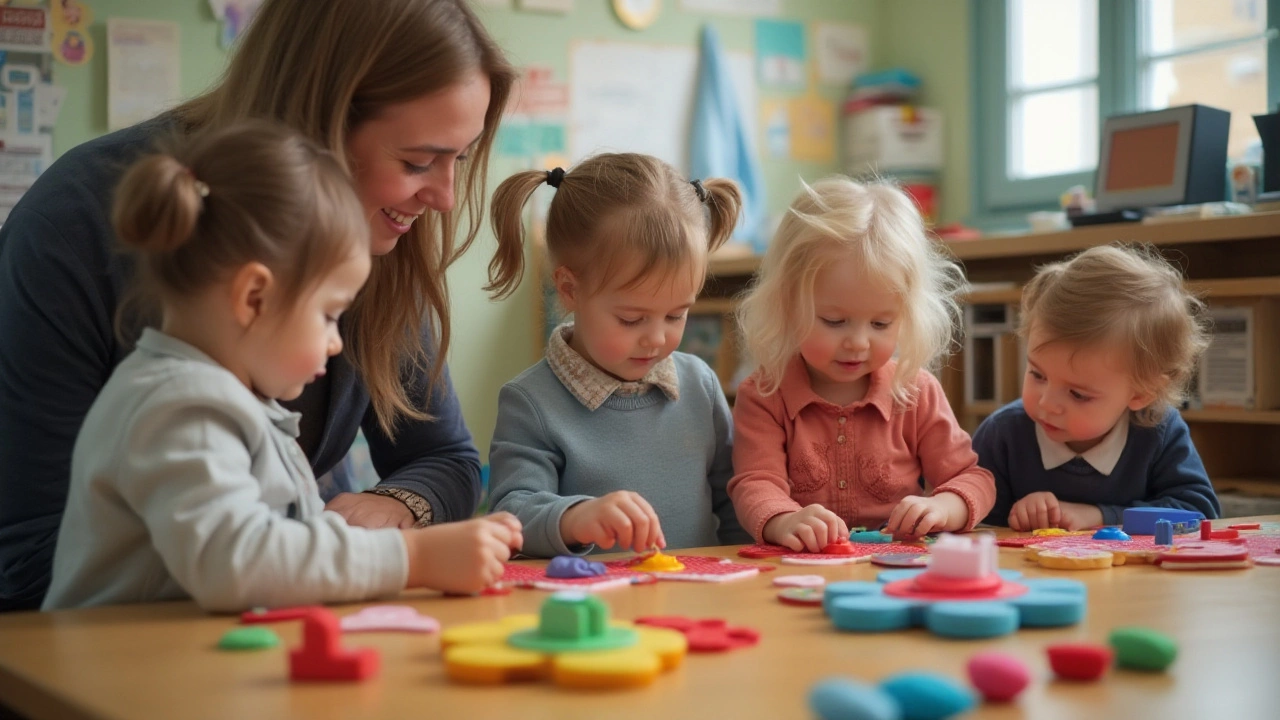
Practical Tips at Home
Finding effective ways to apply the 3-3-3 trick at home can turn moments of anxiety into opportunities for connection and learning. The essence of this method is to identify and engage with your surroundings, and when done with educational toys, it provides an enriching experience for children and even adults. Begin by choosing a quiet space where you or your child feels safe and comfortable. This is crucial as familiarity and safety can significantly minimize anxiety levels. Make this space engaging by filling it with objects that encourage exploration, such as colorful blocks, textured toys, or interactive puzzles.
When the need arises to apply the 3-3-3 method, start by guiding your child to look around and name three things they can see. These can be bright toys arranged on a shelf or unique textures on a puzzle. Encourage them to take a moment and really focus on these items. Next, shift attention to three distinct sounds. These might include the ticking of a clock, the hum of a refrigerator, or the crinkle of a toy. This practice draws attention away from anxiety and submerges the mind into the present moment. Lastly, explore three things they can touch. Various educational toys come with different textures, making them perfect for this final step; perhaps it's the soft plush of a stuffed animal or the cool surface of a plastic block.
Educational toys are invaluable in transforming this exercise into a playful activity. Tangible items that can be held and handled facilitate grounding and can be particularly helpful for children who learn best through touch and interaction. Make a point of selecting toys that target the senses; items that might light up, make a sound, or have a unique feel can be especially beneficial. Consider creating a 'calm box,' a special kit with selected toys and objects that are reserved solely for these mindfulness moments, keeping its contents associated with peace and focus.
Beyond toys, practical implementation of the 3-3-3 trick is enhanced with routine. Regular practice instills confidence and a sense of security. Engage in this technique not just in response to anxiety but also during calmer times, so familiarity builds. Establishing a routine around its use can create positive anticipation and anchor its calming effects even more deeply into daily life. The key is in consistency, making the 3-3-3 trick a part of a well-rounded approach to managing emotions. Of note, according to a study published in Psychological Science, routine use of mindfulness practices like these can enhance attention and emotional regulation.
There's a wealth of research supporting the use of sensory activities for reducing anxiety.
"Simple sensory exercises, such as the 3-3-3 technique, when paired with everyday objects, can significantly improve a child's focus," says Dr. Kim Thomas, a child psychologist and play therapy expert.Her insights resonate with countless families who've embraced mindful activities, noting improved calm and concentration in their children.
Should you need further inspiration for creating a sensory-rich environment where the 3-3-3 method can thrive, consider enrolling in workshops that focus on childhood development and the use of educational toys. These venues often explore the synergistic relationship between learning tools and emotional well-being. Not only does this foster a deeper understanding of anxiety relief methods, but it also equips parents with new ideas and skills to support their child's mental health journey in an engaging and interactive manner.
Success Stories and Benefits
Incorporating the 3-3-3 anxiety relief technique into daily lives has shown promising outcomes, particularly when used alongside educational toys. Many parents and educators have shared positive feedback about how this method has made a significant difference in managing anxiety in both children and adults. By anchoring the mind with its simple steps—identify three things you see, three sounds you hear, and move three parts of your body—the technique creates a moment of respite amidst chaos. This grounding exercise has been especially useful in teaching environments, where children are encouraged to focus and engage actively with their surroundings, fostering a greater sense of calm and presence.
Transformative Narratives
Over the years, several anecdotes highlight the transformative power of this mindful practice. One parent, for example, noted that using tactile educational toys such as textured blocks while applying the 3-3-3 trick allowed their child to control anxiety during busy mornings before school. The tactile element gives children an added dimension to focus on, enhancing the trick’s efficacy. A teacher in Vancouver reported a noticeable shift in classroom dynamics, where students began to self-regulate their stress using these tools, resulting in an increase in concentration and classroom harmony."Mindfulness isn’t difficult. We just need to remember to do it." – Sharon Salzberg, a renowned mindfulness teacher, emphasizes its simplicity and accessibility.
